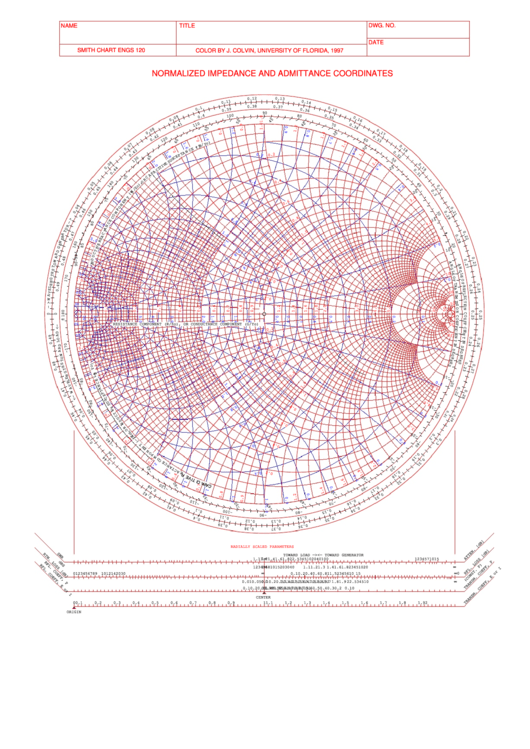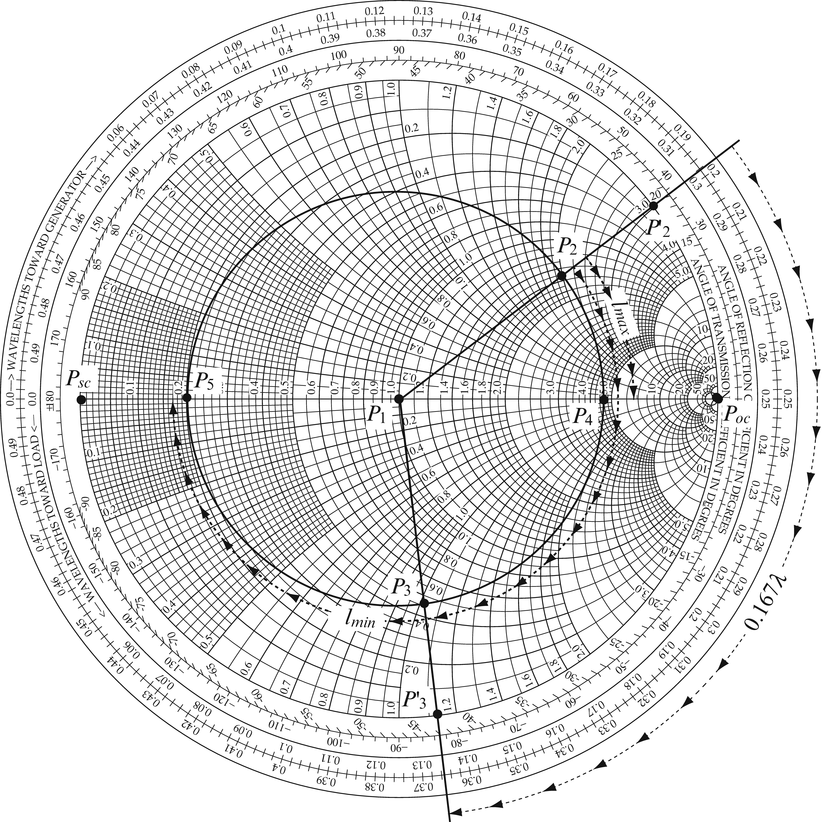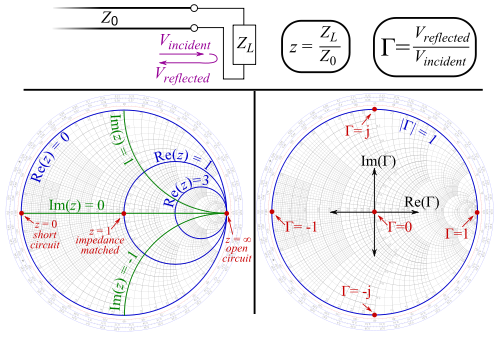
’zy’ : lines of constant impedance stronger than admittance SmithR ( number, optional) – radius of smith chart. Scattering parameters, noise figure circles, etc. Parameters including impedances, admittances, reflection coefficients, It can be used to simultaneously display multiple The Smith chart is used to assist in solving problems with transmission linesĪnd matching circuits. smith ( smithR = 1, chart_type = 'z', draw_labels = False, border = False, ax = None, ref_imm = 1.0, draw_vswr = None ) ¶ Constant Resistance and Constant Reactance CirclesĮlectronic Communication Systems By Kennedy and Davis, Tata McGraw Hill, 4th edition.Įlectronic Communications By Roddy and Coolen, PHI, 4th edition,Įlectromagnetic Waves By R K Shevgaonkar, McGraw Hill. The Smith Chart is drawn by superimposing these two types of circles.

The circles with centers at and radii = 1/(r+1) are known as constant resistance circles as shown in following fig.The circles with centers at (1, 1/x) and radii = 1/x are known as constant reactance circles as shown in following fig. Separating the real and imaginary part, we getįurher simplifying the above two equations, we can re-write them in standard circle equation form asĢ + (v - 0)2 = 2 with center at and radius = 1/(r+1) and Therefore, the possible values of Γ will remain within the unit circle. Γ = u + jv = Rejθ, where R is the radius and θ is the angle of incidence.įrom the last two equation, we can see that there is one-to-one correspondence and for every Z we can obtain a unique Γ. The above equation can also be written as Γ = / for r lies between 0 and ∞, x lies between -∞ and +∞. Γ = (ZL-1) / (ZL+1) as Zo takes constant values such as 50Ω, 100Ω, etc. Therefore, Reflection coefficient can expressed as

Normalized impedance, Z = ZL/ Zo = r+ jx, where r = R / Z0 and x = X / Z0. This is because the behavior of the transmission line depends on load impedance as well as characteristic impedance. Normalized impedance is used for plotting on Smith chart. Γ = (ZL - Zo) / ( ZL + Zo ) where, ZL is load impedance and Zo is the characteristic impedance of transmission line, a constant. Therefore, from the fig., gamma can be expressed as,

The amount of reflected wave depends upon the mismatching of the source and load impedances. The ratio of the voltage of reflected wave and the voltage of incident wave is known as the reflection coefficient. If there is impedance mismatching, part of the energy in the incident wave is reflected back giving rise to a standing wave. transmitter to antenna or antenna to receiver), the impedance of source must be equal to the impedance of load. While transferring the RF waves on a finite transmission line, for maximum power transfer from source to load (i.e. These are the impedance matching circuits. Transmission lines are the circuits that deliver power from a transmitter to an antenna and from an antenna to a receiver.

It consists of two sets of circles for plotting various parameters of mismatched transmission lines. The Smith Chart is the most used tool for microwave engineers to visualize complex-valued quantities and calculate the mapping between them. It is the circular plot of the characteristics of microwave components. The Smith Chart is the graphical representation of a complex mathematical equation.


 0 kommentar(er)
0 kommentar(er)
